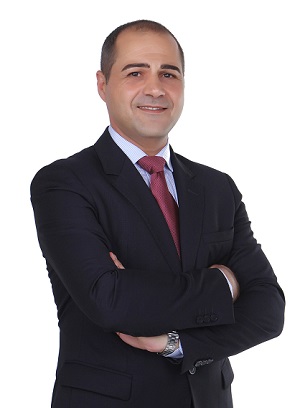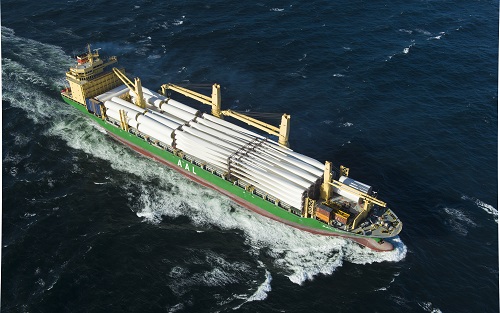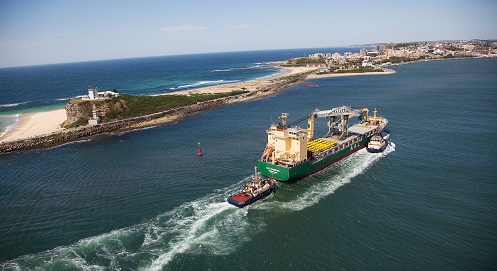Wind Energy Cargoes to the Rescue
The heavy lift and project cargo market is part of the wider multi-purpose sector that has been affected in many of the same ways as the other segments of the shipping industry. In addition to the oversupply of new vessels, the sector has experienced an aggressive invasion by the container and bulk carriers seeking a share in the market of the traditional multi-purpose cargo commodities. On certain commodities the multi-purpose sector is now experiencing all-time low freight rates.
 MarEx spoke to Kyriacos Panayides, Managing Director of AAL, to find out how cargoes demands from the wind energy industry are helping to boost optimism.
MarEx spoke to Kyriacos Panayides, Managing Director of AAL, to find out how cargoes demands from the wind energy industry are helping to boost optimism.
What is the state of the heavy lift and project cargo market worldwide?
Extremely low freight rates are the biggest threat facing the heavy lift and project cargo market. These rates have dropped far below sustainable levels for an extended period of time which, although some argue affects operators more, will inevitably have a negative impact on shippers as well.
Shippers cannot continue benefiting from low freight rates, as eventually they will force smaller size operators into extinction and cause the level of shipping service quality to be compromised - even health and safety. I am also afraid that this will ultimately boomerang, when higher freight rates return and shippers are left with far fewer quality options on their carrier lists.
Another key challenge for the project sector at the moment is the possible fall in demand for project cargoes in the oil and gas industry as a result of the fall in oil prices, where a number of projects have already been postponed, with more in the pipeline.
What reasons are there for optimism?
We remain cautiously optimistic that the markets are bound for recovery. The growth in renewables and the fact that many nations require improved infrastructure provides room for optimism, with huge budgets already placed on large infrastructure projects, which could act as a counterbalance to the challenges faced by the oil and gas industry and even the mining industry.
Furthermore, the oversupply issue within our (multipurpose) sector is now showing a manageable trend with just below one percent fleet growth expected. Without hard evidence, we expect part of this new fleet to be offset anyway, by the demolition and exit from the market of older tonnage, easing the pressure of possible oversupply.
How significant will the predicted growth in the offshore wind sector be?
A report published by the International Energy Agency late last year showed that renewable energies – wind as well as solar and other sources – produce 22 percent of the world’s electricity now. This proves it has been seen significant growth already, with more vessels allocated to this trade and more ocean carriers entering this sector.
 Over recent years, offshore wind farm projects have been gaining significant ground. However, windmill components have become heavier and larger in size, thus requiring highly specialized, early planning for every individual shipment as well as robust technical engineering capabilities in order to develop and implement customized transportation solutions. In addition to that, these cargoes now need larger vessels with heavier lifting capacities. Hence the demand for this type and size of vessels is growing.
Over recent years, offshore wind farm projects have been gaining significant ground. However, windmill components have become heavier and larger in size, thus requiring highly specialized, early planning for every individual shipment as well as robust technical engineering capabilities in order to develop and implement customized transportation solutions. In addition to that, these cargoes now need larger vessels with heavier lifting capacities. Hence the demand for this type and size of vessels is growing.
Growth in the wind energy sector is not just for offshore projects. Given developments in technology and the increase in the number of manufacturers of wind turbines, we are now seeing onshore, wind-generated power becoming more cost competitive against new coal or gas-fired plants. This, combined with stronger political levies and policy conventions forcing conversion to renewable energy, creates a strong ally to the multi-purpose shipping sector to see demand and growth is maintained.
Where will the demand come from?
We would expect to see demand growth from all continents. In particular, China is expected to invest heavily and see significant growth, although this might not help our sector in view that the vast majority of the components will be sourced locally.
Europe will continue to show strong growth, in particular the northern part, whilst Turkey is also likely to drive further growth.
On the other side of the Atlantic, North America might be affected by reduced subsidy schemes in the U.S., although Mexico is expected to record a significant positive trend.
To what extent does the market in China influence the sector?
With high growth both in exports and imports, China has been pivotal in shaping the market for breakbulk and project cargo shipments, and will continue to drive the market in the years ahead. This is despite a recent slowdown in exports and sourcing out of China due to many fabrication plants and shipyards having increased spare capacity with reduced order books.
We might see China encouraging Chinese engineering, procurement and construction companies to intensify investment overseas which will generate heavy cargo movement. China is rapidly migrating its exports from low end to high end quality products, leading the region to compete head on with export nations like Germany, Korea and Japan.
How is AAL dealing with market challenges?
 At AAL, we are managing this tough market with very careful stewardship of our operations and customer service activity. For us, ensuring sustainable growth during this time is about maximizing cost, operational and environmental efficiencies for our customers, proactively exploring growth sectors and regions and looking into alliances that can compliment further our business strategy, to offer the market even more efficient and comprehensive services.
At AAL, we are managing this tough market with very careful stewardship of our operations and customer service activity. For us, ensuring sustainable growth during this time is about maximizing cost, operational and environmental efficiencies for our customers, proactively exploring growth sectors and regions and looking into alliances that can compliment further our business strategy, to offer the market even more efficient and comprehensive services.
The heavy lift and project cargo sector is a very specialized trade, in which there are few companies such as AAL that can offer the required technical transportation solutions that customers need. This specialist expertise and heritage has enabled AAL to realize exponential growth over the past few years despite the downturn of the markets, doubling revenues and expanding our fleet, trade routes and services to cement our position as a truly global carrier.
At AAL, our focus has been to concentrate on delivering sustainable growth. We have invested significantly in developing the most modern and innovative fleets within our sector: 19 multi-purpose vessels consisting of 10 A class (31,000 dwt) and 4 S class (19,000 dwt) with a combined lifting capacity of 700mt and adjustable twin deck holds.
We have a further five vessels on long-term charter of which three are 21,000 dwt T-Class and two are 25,800 G-Class vessels. We have also invested in expanding our global operations further, to provide a more robust infrastructure, with reputable and skillful personnel and associates that lift us to a stronger competitive position within the market. – MarEx
The opinions expressed herein are the author's and not necessarily those of The Maritime Executive.
